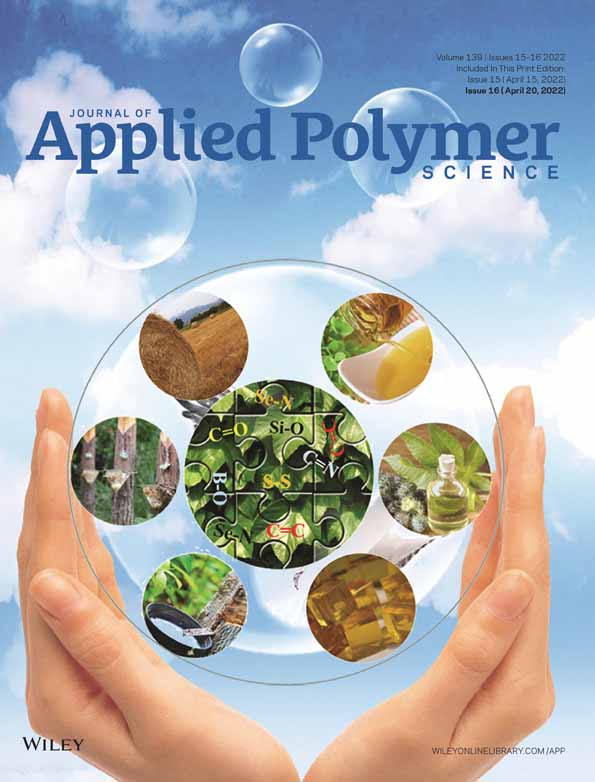Design of polyurea networks containing anticancer and anti-inflammatory drugs for dual drug delivery purposes
Funding information: Coordenação de Aperfeiçoamento de Pessoal de Nível Superior (CAPES), Grant/Award Number: 001; Conselho Nacional de Desenvolvimento Científico e Tecnológico (CNPq), Grant/Award Number: 306271/2017-6; FAPESP SPRINT, Grant/Award Number: 2017/50286-9; CNRS; Fundação de Amparo à Pesquisa do Estado de São Paulo (FAPESP), Grant/Award Numbers: 2019/17860-9, 2020/06531-1
Abstract
Naproxen (Nap), a non-steroidal anti-inflammatory drug, and 5-fluorouracil (5FU), an anticancer drug, were easily incorporated into a polyurea xerogel. Polyureas (PUr) were synthesized by one pot reaction via sol–gel chemistry. Soft segments were based on polyetheramine-PEO and hard segments were based on a hexamethylene diisocyanate trimer (HDI). The final materials were characterized by Fourier transform infrared (FTIR) spectroscopy, small-angle X-ray scattering (SAXS), and differential scanning calorimetry (DSC). Polyurea can assume many forms revealing its versatility in terms of produced shapes. In good agreement with FTIR, SAXS studies showed a microphase separated structure arising from inter-hard-domain spacings, which remains unchanged after incorporation of the drugs. DSC analysis demonstrated that the PEO chain mobility was poorly affected after the drugs incorporation due to the solvation of the drugs through the network. The water uptake and the amount of drug released agree well, playing an important role for controlled Nap and 5FU release. This work opens positive perspectives for ocular drug delivery and wound management, due to the easy processability of the xerogel, which has high feasibility to be moldable as pharmaceutical devices for contact lenses and transdermal patches purposes containing distinct therapeutic agents.
CONFLICT OF INTEREST
The authors declare no conflicts of interest.
Open Research
DATA AVAILABILITY STATEMENT
No. Research data are not shared.




